Introduction
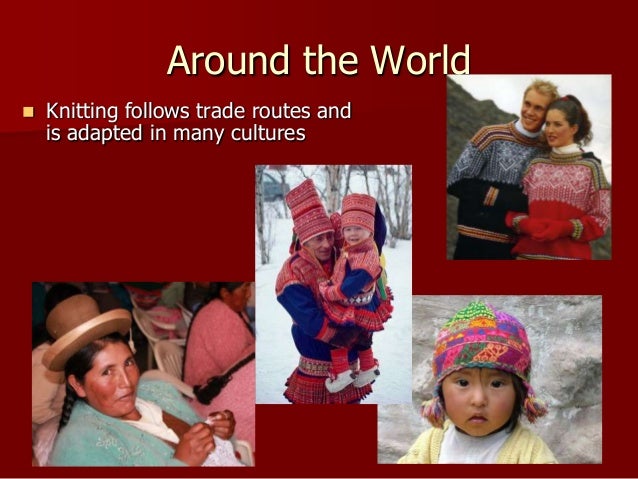
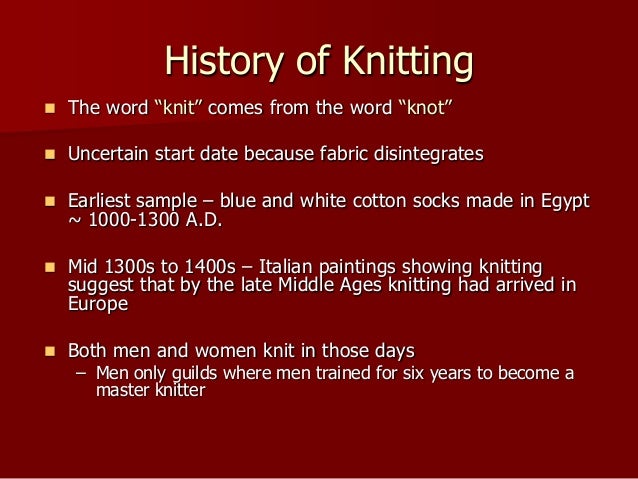
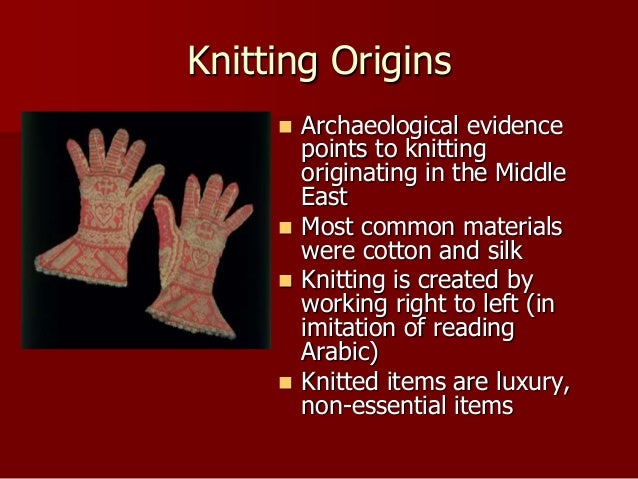
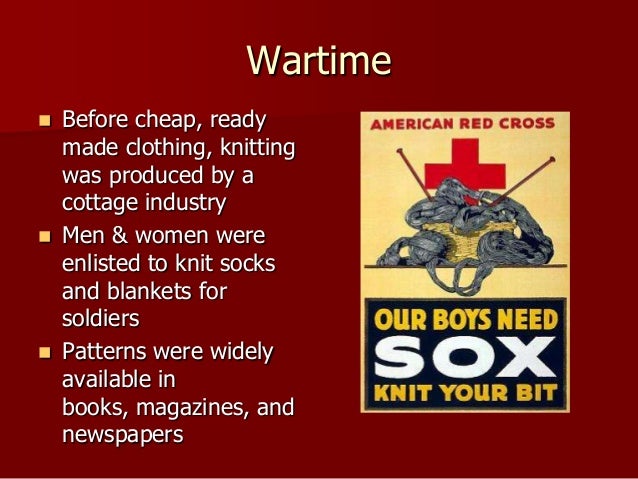

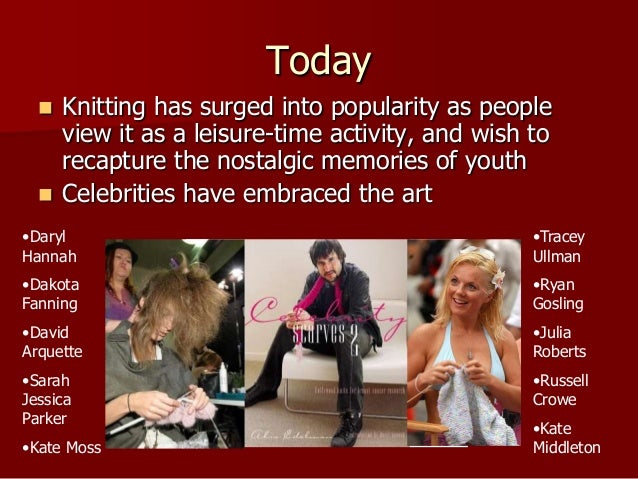
Task
LEARNING OUTCOMES: At the end of this lesson you should be able to:
- Define what is knitting.
- Identify the tools, equipment, and materials used in knitting.
- Create a beautiful and marketable product using the basic stitches in knitting.
Process
On this activity, students will be able to appreciate HANDICRAFT through needle craft or needle work particularly by doing or creating their own product through knitting. But first let us define what is needle craft, and what compose needle craft.
Needle craft is art or process of needlework. It is a creation created or assembled by needle and thread and a work that is done with a needle.
creation- an artifact that has been brought into existence by someone.
types:
- crochet, crocheting needlework done by interlocking looped stitches with a hooked needle
- fancywork, embroidery - decorative needlework
- knitting, knit work, knit - needlework created by interlacing yarn in a series of connected loops using straight eyeless needles or by machine
- stitchery, sewing - needlework on which you are working with needle and thread; "she put her sewing back in the basket"
- tatting - needlework consisting of handmade lace made by looping and knotting a single thread on a small shuttle
- sewing or embroidery- a work that is done with a needle.
Now that you know what is NEEDLE CRAFT, lets discuss about KNITTING.
A.What is knitting?
A knit is a piece of fabric or a garment that is made by joining together interconnecting loops of yarn or thread in rows of stitches. An example of a knit is a dress or sweater made of interconnecting loops of yarn.
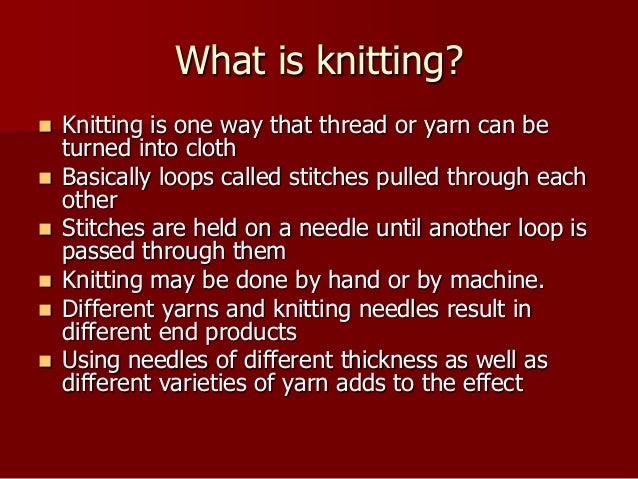
B. What knitting looks like?
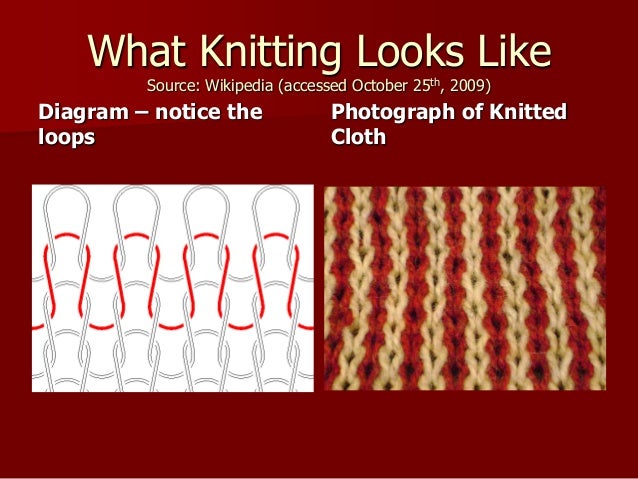
Now that you know what is KNITTING, let us now begin the activity.
Activity 1. Understand knitting as a needle craft.
A. Observe the pictures and describe it's characteristics.
Activity 2: Identify the tools, materials and equipment used in knitting .
A. Search for the tools, materials and equipment used in knitting. Classify them according to their uses. Follow the example below.
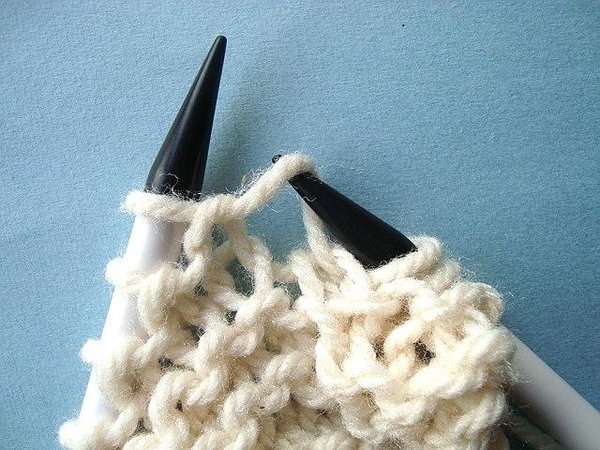
1.Yarn Needles
Yarn needles are needles with an eye large enough to thread yarn through. These needles are usually plastic (though sometimes metal) and quite inexpensive. Yarn needles do double duty, because they can be used to weave in ends or to stitch seams together, which is nice for certain projects.
Keep in mind these needles are easy to lose, so we recommend buying a small container to store them when not in use
Activity 3. Perform basic stitches in knitting.
A. visit the steps in making a knitted scarf @ https.//www.youtube.com/watch?v=24lR2IRS57A
B. Observe techniques, proper use of tools, materials and equipment.
C. Make your own beautiful and marketable knitted scarf.
D. Observe proper posture, safety and precautionary measures while working on it.
Evaluation
The project/product will be graded according to this criteria:
- NEATNESS----------------15
- CREATIVITY---------------15
- SKILL-----------------------20
TOTAL OF--------50 points
Conclusion
WHY KNITTING?
The research suggests knitting could save the NHS millions of pounds
Knitting won’t just result in a new sweater - research has found the hobby can also reduce depression and anxiety, slow the onset of dementia, and distract from chronic pain.
Published by Knit for Peace, the findings are the result of extensive research into previous studies analysing the benefits of knitting, as well as the initiative’s own research.
According to Knit for Peace, a network of over 15,000 knitters in the UK who knit for people in need, there is substantial evidence that suggests knitting is beneficial to a healthy mind and body.
And a 2011 study conducted by the Mayo Clinic of over 70-year-olds found that those who knit had a “diminished chance of developing mild cognitive impairment and memory loss.”
Additionally, the hobby, which is often associated with elderly, can help fight loneliness, a plague that affects 1.2 million older people in the UK, and increase a sense of usefulness and inclusion.
“It is a sociable activity that helps overcome isolation and loneliness, too often a feature of old age. It is a skill that can continue when sight and strength are diminished,” the report states.
The findings were also supported by Knit for Peace’s own survey of 1,000 members.
According to the survey, 70 per cent stated they believe that knitting improves their health - the main reason being that it makes them feel relaxed.
Survey respondents also revealed that knitting helps them deal with chronic pain, with 21.4 per cent reporting knitting helps relieve the pain of arthritis.
Knit for Peace hopes the findings will encourage more people to take up knitting, as they believe it could diminish the need for doctors visits.
“Every GP appointment costs around £45 but we believe knitting could help prevent people needing to visit the doctor so much, and help them feel happier, less isolated, and more healthy,” states the report.
As the NHS spends an annual £26 billion tackling dementia, and an additional £300 million on antidepressants, according to the NHS's annual report, knitting could be the answer to lower medical costs.
So the next time your grandma offers to teach you to knit, take her up on the offer.
Or you could always turn to YouTube, where there are hundreds of knitting tutorials for beginners.